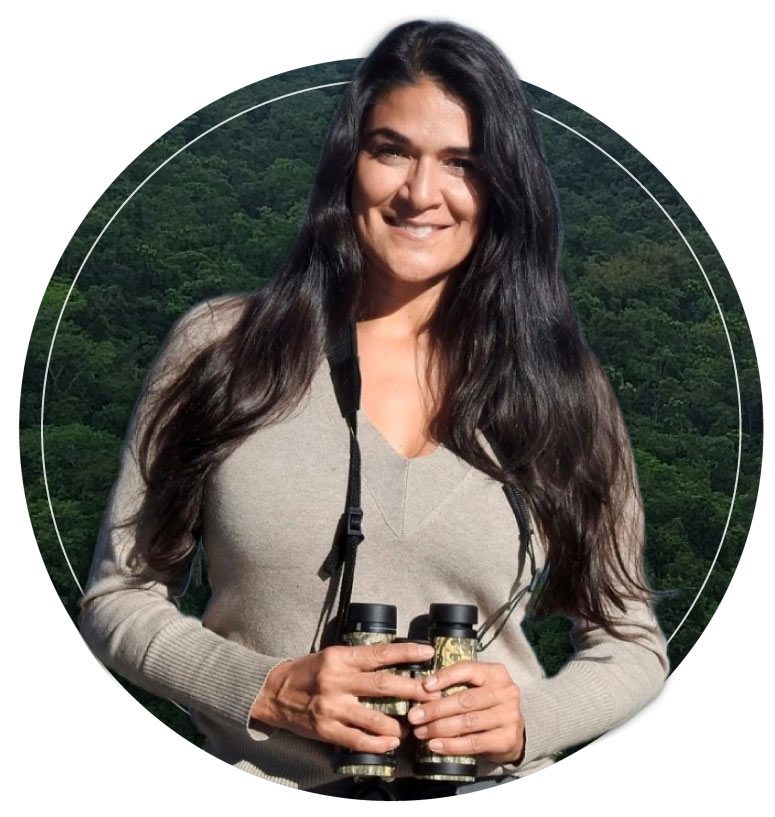
“We think that the tribe is like an eagle. One wing is male and the other is female. And only when the two wings are equal, the tribe is able to fly.”
These words are from Jane Goodall, renowned English ethologist who the world knew for her pioneering studies on chimpanzees. He cited them from the head of an indigenous tribe in Latin America when he was asked about gender equality in science during a public conversation with women, framed in a consecrated educational project.
In congruence with the primatologist’s reflection, ProAves and Women for Conservation reaffirm the great value that women represent in conservation activity and in science through the recognition of their potential, their willingness to learn and teach, their demands for equal participation. for environmental protection.
“Woman in science, research and conservation means diversity of approach, inexhaustible source of curiosity, scientific devotion, capacity for adaptation, generation of knowledge; Just as it fertilizes life, it engenders wisdom, at any level, with methodological tools for science; with intuitive and practical mechanisms in their daily lives,” said Sara Inés Lara, executive director of ProAves.
The equitable access of women in matters of environmental preservation does not only contemplate the capacity that they have demonstrated to carry out with the same rigor the tasks inherent to scientific work: contributions that help to understand the changes and the actions that must be undertaken to make recovery and exercise defense. Also, the way they throw themselves into the uncertain, overcome the adversities of work in the field, bond with the actors involved and build new futures.
Part of a study by the Universidad del Rosario, disclosed on its virtual channels, points out that, although the number of researchers in Colombia has been increasing in the last decade, the number of women dedicated to this activity in natural sciences does not reach 40 %, (Our U, 2024).
The reasons are associated with multiple factors, social, cultural, economic, even academic. According to these reports, some limitations such as the classification of projects into medium and low categories affect access to opportunities to finance them.
Closing gender gaps in science and research in Colombia becomes one of the most challenging tasks for the ProAves Foundation that arises from its missionary umbrella: the conservation of threatened species.
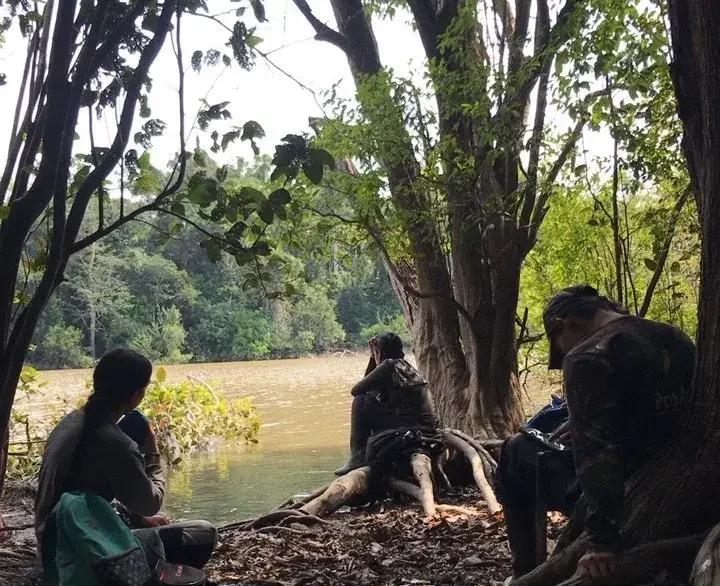
Aware of the role that organized civil society must play in dismantling these barriers, ‘Women in Research and Science Scholarships’ was born, a program that promotes the equal participation of women when generating knowledge and with which the organization honors its inspirational influence and transformative power in society.
“There is no evidence that, in the field of science, the distinction of roles due to gender status produces better results. Rather, it could benefit from a balance in the course of its processes, as usually happens in nature,” added the CEO of ProAves.
An evaluation committee made up of a team from multiple disciplines articulated between Mujeres por la Conservación and Fundación ProAves chose, among 30 applicants, the first five young researchers to accompany them in the development of undergraduate or postgraduate projects focused on the conservation of species and their habitats in the ProAves El Jaguar reserve, where life still abounds, but also challenges.
Each initiative had to consider one or more species from a list with threat categories. Among the mammals, the Tapir, the Jaguar, the Churuco Monkey, the Amazon Pink Dolphin, the Giant River Otter, the Palm Bear and the Plains Night Monkey. Among amphibians and reptiles, the Terecay Turtle; and among the birds, the Brown Monjita, the Chestnut-rumped Curassow and the Harpy Eagle.
“It is important to highlight that they did not do their work isolated from the communities. Through workshops, they interacted with the communities that responded by accompanying them, taking them to the sites, showing them their areas to work on populations of different species. It is important that scientific knowledge resonates among the communities and among the women of those communities,” added Alex Cortés, Research Director of the ProAves Foundation.
This is how in a month and a half, five young women, with their selected projects and expectations in tow, crossed almost half the country of residence or work to arrive where the morichales and savannahs of the Colombian Orinoquía begin their journey towards the Amazon jungle.
The ProAves El Jaguar Reserve in Mapiripán
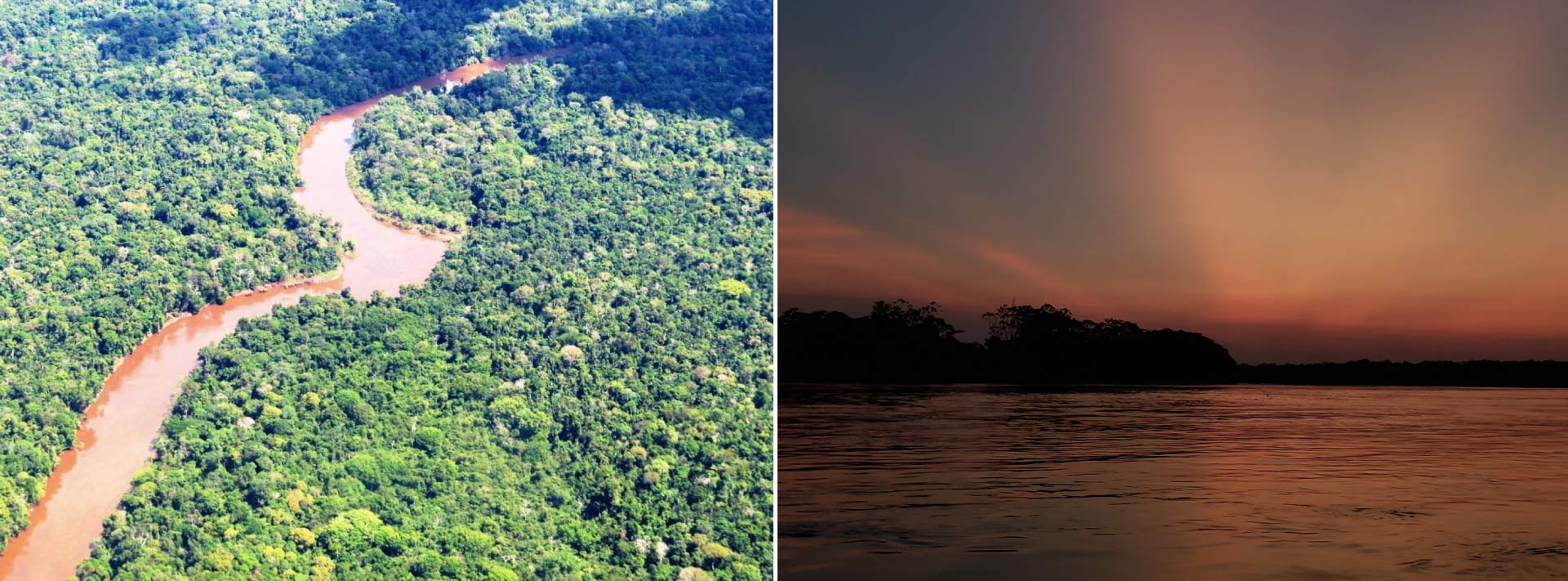
In Mapiripán, Meta, the ProAves El Jaguar reserve rises between 160 and 230 meters above sea level. Until the second half of the 20th century, this entire territory and beyond was home to nomadic indigenous communities, including Guaíbos, Sikuani, Achagua; and at the same time, a rich diversity of fauna and flora, which no one was ever in charge of observing and counting because although some lived off of others, balance always prevailed, perhaps a product of ancestral indigenous wisdom and the lack of interest of the Spanish conquerors considering it immense, distant and not very fertile for their interests.
In 2013, when ProAves’ concern for this territory led to a series of efforts to make a sanctuary for flora and fauna a reality, 50 years of predation had already been completed.
Public records say that deep into the 60’s, after the arrival of the first settlers, some foreign aviators and adventurers came to occupy vacant lands of the nation in an area that today includes almost all of Mapiripán.
Partisan violence had already thrown hundreds of political refugees to these latitudes who, with the permission of the plundering landowners, founded a small town.
The rest is history. The first livestock practices were followed by more families in search of a future, then the FARC guerrillas and the Self-Defense Forces, and more illegal occupants, then coca plantations and disputes over drug trafficking routes. It is impossible to avoid the massacre for which this municipality became tragically famous in 1997 when a paramilitary commando invaded its inhabitants with force and blood.
All the natural wealth that resonated among the gallery forests with the voices of hundreds of birds, mammals and aquatic species that occupied its lagoons, swamps and rivers, began to be silenced with the noise and effects of violence.
“Mapiripán, where the El Jaguar reserve is located, has historically been a victim of violence in every sense, social, economic, territorial, environmental; However, the biodiversity it has has been one of its greatest obstacles. With the biological station we set out to protect this great natural heritage and, with these first scholarships, to facilitate knowledge practices for its development and positioning. Gender inclusion is a useful mechanism in conservation processes because the work, exploration and generation of new skills in the hands of women help us better understand these threats to guarantee protection,” said Sara Inés Lara, executive director of the ProAves Foundation.
The ProAves El Jaguar reserve, deployed in a kind of corridor between the Caño Evaristo and Esteros Altos trails, includes the last remaining forest of this territory located in the south-central part of the department of Meta.
Towards the north, phenomena such as extensive livestock farming, monocultures and deforestation have generated great tension between nature and community.
But there, in the conservation area and its surroundings, endangered species to varying degrees such as the Jaguar, the Harpy Eagle, the Pink River Dolphin, the Giant River Otter and the Tapir survive with miraculous stoicism.
Work for the survival of more than 420 species of birds, around 70 species of mammals, nearly 20 species of amphibians, more than 40 species of reptiles and no less than 159 species of trees and plants registered to date in the reserve and its surroundings, is a higher purpose for ProAves and Women for Conservation, which contemplates a series of processes and initiatives where the equation: research, gender and education, constitutes an ambitious strategy to link the communities as they are the main custodians and legatees of this treasure called biodiversity.
Five research projects selected to receive funding and support from the ProAves and Mujeres por la Conservación teams began their field phase in January 2024. The analysis of the results is underway to later be recorded and disseminated in a scientific article. .
Here are some memories and asides from three of the projects.
On the trail of the Giant River Otter
Yeimi Natalia Parra Mendoza is 22 years old. He studies a degree in Biology at the Francisco José de Caldas District University in Bogotá. Since she was little she felt the call of nature under threat and when she met the Giant River Otter (Pteronura brasiliensis) thanks to scientific literature, she began to cultivate a curious interest in this critically endangered mammal.

Deep into her study, the young biologist in training discovered an overwhelming reality: that it was a species endemic to South America but that for many years it had suffered persecution by man for its fur, its offspring and its prey, which was also a target of deforestation. , the pollution of rivers and a long list of problems related to human activities that surround their habitat.
“The ‘water dog’, as the giant otter is known, has predators such as the Black Caiman, Orinoco Caiman, babillas, anacondas and the jaguar; However, humans became one of their biggest predators due to the increase in unsustainable agricultural practices, cutting and burning of forests, overexploitation of wood, expansion of the agricultural and livestock frontier, inadequate waste disposal, and progressive deterioration of water. , loss of vegetation cover, fishing pressure, among other activities that are directly affecting the population growth of this species,” added Yeimi Parra.
In his theoretical exploration she also learned that they play a fundamental role as bioindicators of the quality of river ecosystems and are regulators of fish populations, but knowing that was not enough for Yeimi. So he decided to act.
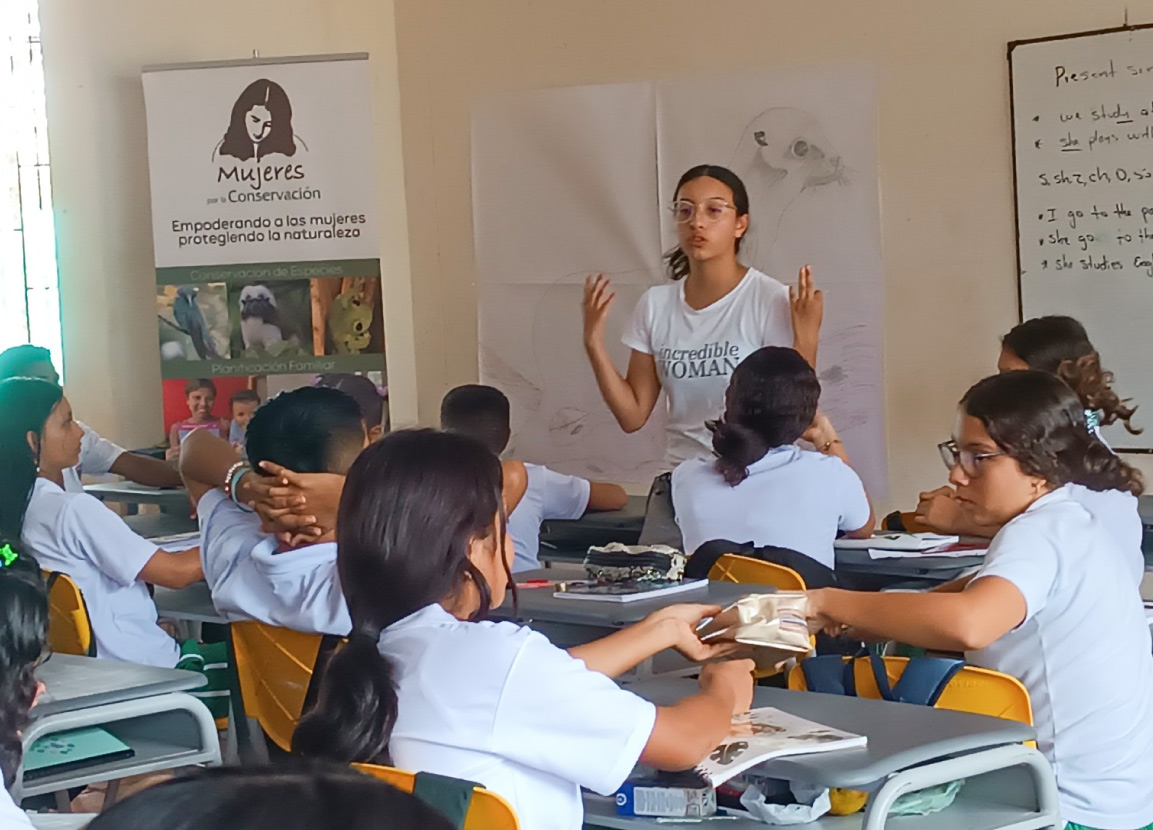
“Distribution and population abundance of Pteronura brasiliensis and its relationship with local communities in the ProAves el Jaguar Reserve (Mapiripán-Meta)” was the title of the research with which he responded to the ProAves call and with which he convinced the selectors of the foundation after a masterful exhibition.
Her project included actions to contribute to the conservation of the Giant Otter such as field monitoring, sighting, observation of its behavior and the state of its habitat, as well as the implementation of environmental education processes with the participation of local communities and students. of the area. In less than three months, Yeimi Parra was on board a bus that would take her in 12 hours from Bogotá to the El Jaguar reserve, to carry out her field work.
A count of otters present at four observation points, established in Caño Evaristo and Laguna Encanto, produced a record of different groups made up of six to eight individuals, identified by their gulars (spots on the chest). Likewise, it was recognized that the habitats of these otters are not so close to the activities carried out by humans, but the pressure from the territory’s fishermen does represent a threat when competition between otters and humans for food arises.
A fundamental component of the giant otter project resided in environmental education implemented through workshops with residents and students of the territory to involve them in the initiative. Yeimi created a video “Otter Cinema, a footprint for conservation” with which he documented experiences, chronicles and results of the sightings carried out together with the community, natural guardian of the species, in order to make them take much more responsibility for the safeguarding of the giant river otter to stop its extinction.
“It was an opportunity that taught me to value each organism, how fundamental teamwork is and how silence can guide us on the path to finding what we are looking for. The immensity of the Guaviare River and its jungles, the grandeur and respect that must be given to nature is immense. Just as it allows us to be knowledgeable about its wonders, we must also return that with our bioethical work.”
Yeimi Parra, Biology Student. Project: Strategies to mitigate threats and promote coexistence between Pteronura brasiliensis and local communities of Mapiripán, Meta.
The protection of the Jaguar in an educational communication strategy
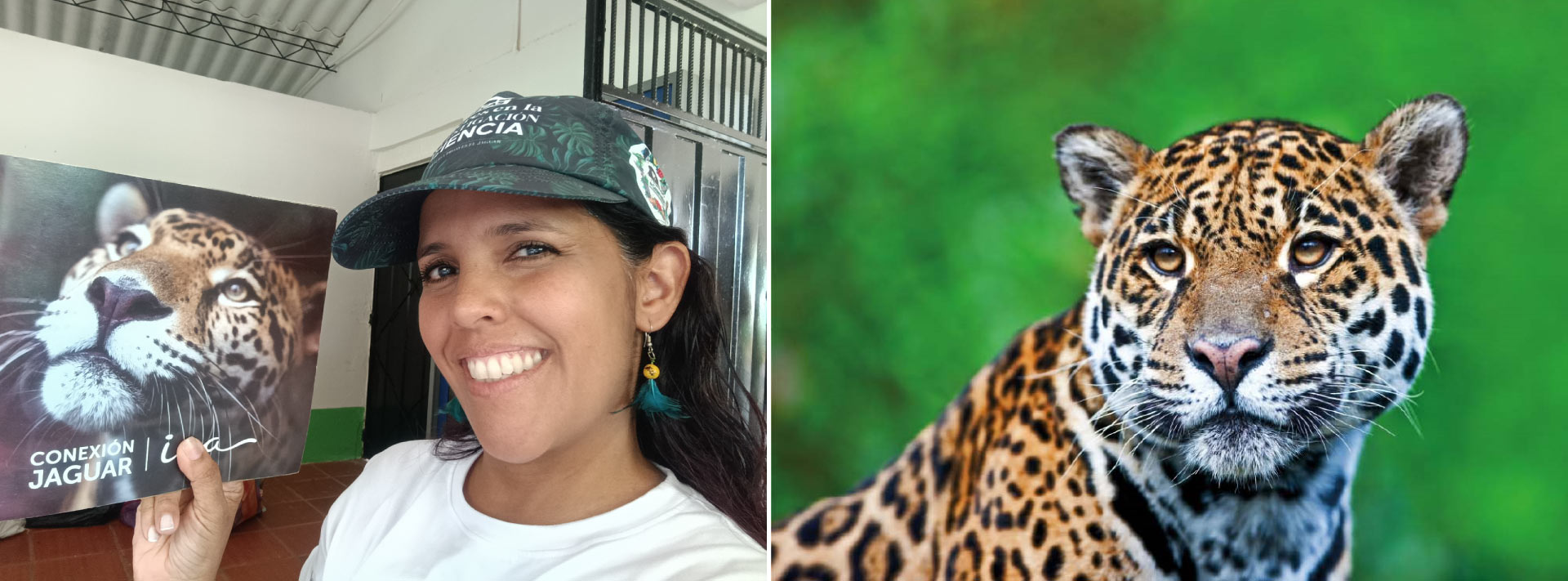
Katherine Becerra has a great fascination for felids. This is confirmed by the deep bond with his three domestic cats Pachamama, Picasso and Libertad and a genuine concern for the fragility of the Jaguar (Panthera onca), the only big cat in America, categorized as a vulnerable species by the Colombian Ministry of Environment in 2024. there, the topic on which he structured his research proposal:
“Educommunication, a strategy to strengthen governance and protect the Jaguar and its habitat in Mapiripán.”
After having been chosen to be part of the five scholarship recipients of the Proaves program that encourages the participation of women in science and research, Katherine was interned for 45 days in this corner of eastern Colombia with clear objectives and a greater goal. : identify the governance processes aimed at the protection of the jaguar, analyze results, the impact on the reproduction of the Jaguar and the species-farmers relationship to converge on the design of a strategy based on communication pedagogy.
At that time, the social communicator-journalist with a master’s degree in Environmental Management and Sustainable Development from the University of the West, did not have the luck of spotting a jaguar, but she did have the opportunity to identify three great challenges to overcome to guarantee its survival: loss of their habitat due to deforestation, hunting of their prey and deaths due to retaliation associated with conflicts with ranchers.
“In this research, what I present is a balance of the knowledge that the Mapiripán community has about the Jaguar, the problems that endanger this species and the identification of opportunities to raise awareness and take the first steps towards governance processes from the educommunication,” said Katherine Becerra.
Like no one before for this purpose, Katherine traveled inch by inch through the municipal capital of Mapiripán and areas near the reserve to interview, with the rigor of the journalist that she is, the inhabitants, the professionals of the Jorge Eliecer Gaitán Educational Institution, to teachers from the indigenous communities settled in this territory, to forest rangers, to civil authorities, livestock leaders, to spokespersons for the agro-industrial multinationals that operate in the area and international foundations that work for felines.
From the reading of data obtained, the project showed, among other results, that there is an urgent need to pave the way for governance processes around the protection of this species because, although there are governance and citizen participation initiatives, Mapiripán as a society suffers from of a “realization of relationships between various actors involved in the process of deciding, executing and evaluating matters of public interest”, as ECLAC defines governance (Biblioguía. May 2024).
The expert in environmental management corroborated the decline of Jaguar prey such as the deer, the Lapa, the Cafuche, the Zaino, due to a rivalry unleashed with the communities to obtain sustenance, which causes the jaguar to look for food on the farms. livestock.
To this he added among his arguments, the problem of deforestation. According to the annual study of the Foundation for Conservation and Sustainable Development (FCDS) for the years 2022-2023, Mapiripán registers just over 11,400 hectares deforested since 2016.
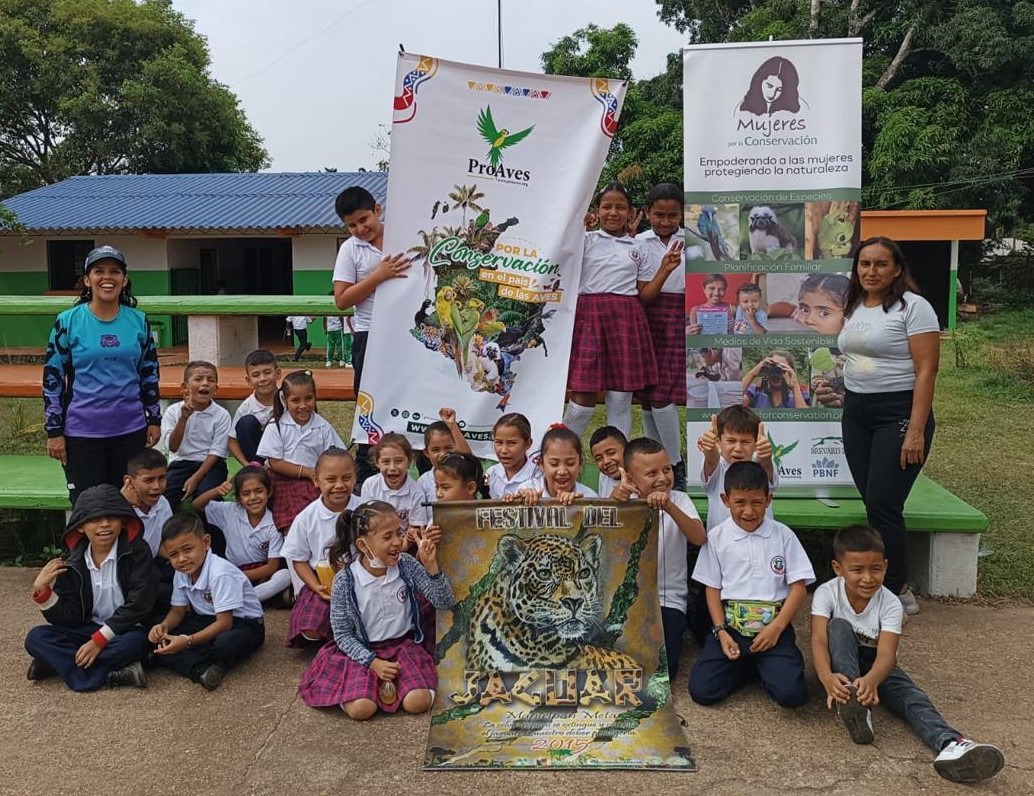
The researcher finally arranged her analysis to formulate an educommunication proposal with four specific propositions:
*Promote environmental education in educational institutions and in prioritized trails to provide knowledge about coexistence with the Jaguar.
*Reactivate the celebration of ‘Jaguar Day’ and extend awareness activities to the prioritized areas (San Fernando, Buenos Aires, Rincón del Indio, Puerto Siare, Anzuelo and Esteros Altos).
*Encourage silvopasture to avoid the extension of areas to feed livestock.
*Encourage citizen participation to boost the interest of farmers and ranchers in the conservation of this species with the ‘Jaguar Friendly Farms’ initiative.
*Manage more conservation projects.
“My dream as a conservationist woman is that spaces for environmental education and awareness continue to be promoted, that this path of awareness and love for nature, for flora and fauna continues to open so that Colombia maintains its heritage in biodiversity and For this, political will is clearly necessary not only from the Government, from the executive branch, but from the legislative branch.”
Katherine Becerra, social communicator, master in Environmental Management and Sustainable Development. project: Educommunication, strategy to strengthen governance and protect the Jaguar and its habitat in Mapiripán.
The call of the Pink River Dolphin
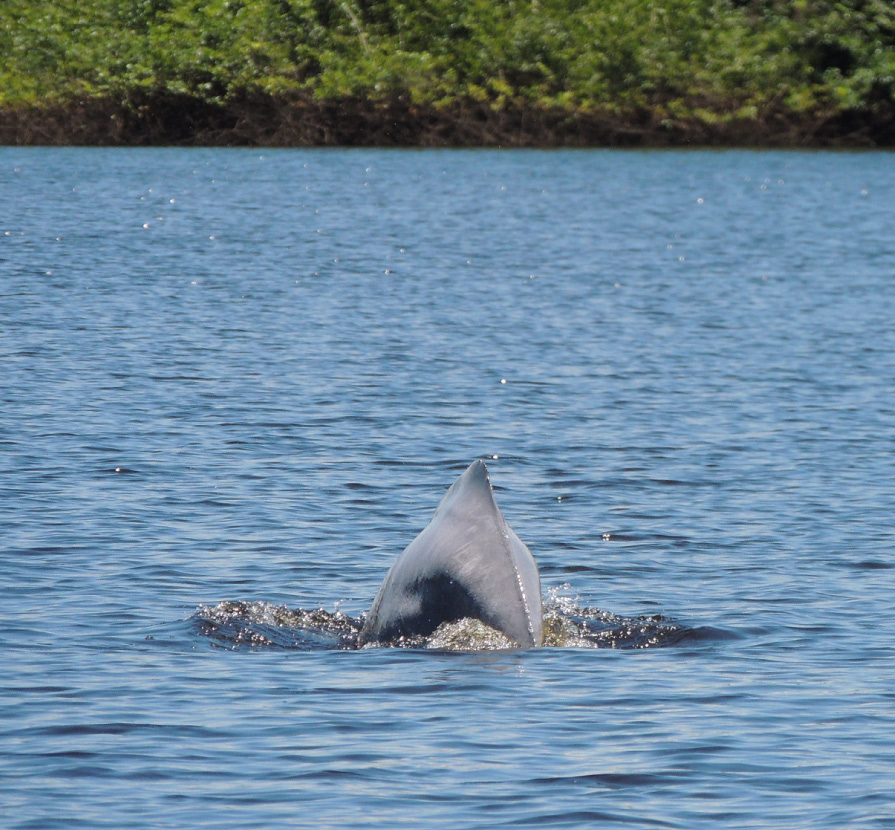
Amazonian legends speak of an enchanting being, a magical creature that from time to time emerges from the sweet currents of the river to seduce the inhabitants and lead them to its underwater world. They are one of the mythological stories that describe the endearing relationship built since ancient times between humans and dolphins, but deteriorated in the last 25 years due to the dramatic transformation that the Colombian jungle is undergoing on uncontrollable scales at the hands of man.
The Bogotá veterinary medicine student at the National University, Luisa Díaz, was able to attest to this disconnection, when addressing the youngest people of Mapiripán and its river towns. In the development of his research, he noticed a certain strangeness when he asked them about the species, he noticed a kind of “collective amnesia” fueled by the few sightings today and the nostalgia with which the grandparents evoke the “Boto” or “Tonina”. ”, popular names of the Pink River Dolphin (Inia geoffrensis). Seeing it crossing some section of the Guaviare River basin, where the laboratory was developed, is a marvel.

“They are species that have been forgotten by generations and are no longer remembered as before, this is evidenced by work in the field, therefore, it is important to work on education so that this generational knowledge is not lost because it is interesting to see that The older adults did manage to get to know these species, they interacted with them, they recognized their place in the environment and the younger ones do not know them. They will be the ones who will generate these conservation, development and rehabilitation initiatives for these species,” added Luisa Díaz.
The young scholarship recipient of the ProAves incentive program for research with gender equality, realized the gaps in the knowledge of the species and let herself be carried away by the charms of the Pink Dolphin that legends tell, the most intelligent and social of cetaceans, with which she fell in love when she also discovered that the two freshwater species in the country are one of the few that can be counted on the planet.
Both dolphin species were declared endangered by the Union for Conservation of Nature (IUCN) due to the impact of dam construction, mercury pollution and loss of river connectivity, irresponsible fishing exploitation, capture for use as bait , climate change, entanglements in fishing nets, inappropriate tourism practices and countless anthropogenic activities that contribute to the degradation of ecosystems.
Then, he proposed to develop an ambitious project that focused his hypothesis on the health of the habitats of the Pink Dolphin and the Giant River Otter. He named it “Detection of antimicrobial-resistant pathogens considered a priority for public health in bodies of water near the Proaves El Jaguar Reserve.”
After intensive work in the field, taking samples, collecting testimonies and implementing protocols and laboratory analysis, the future veterinarian managed to propose several approaches related to the object of her research:
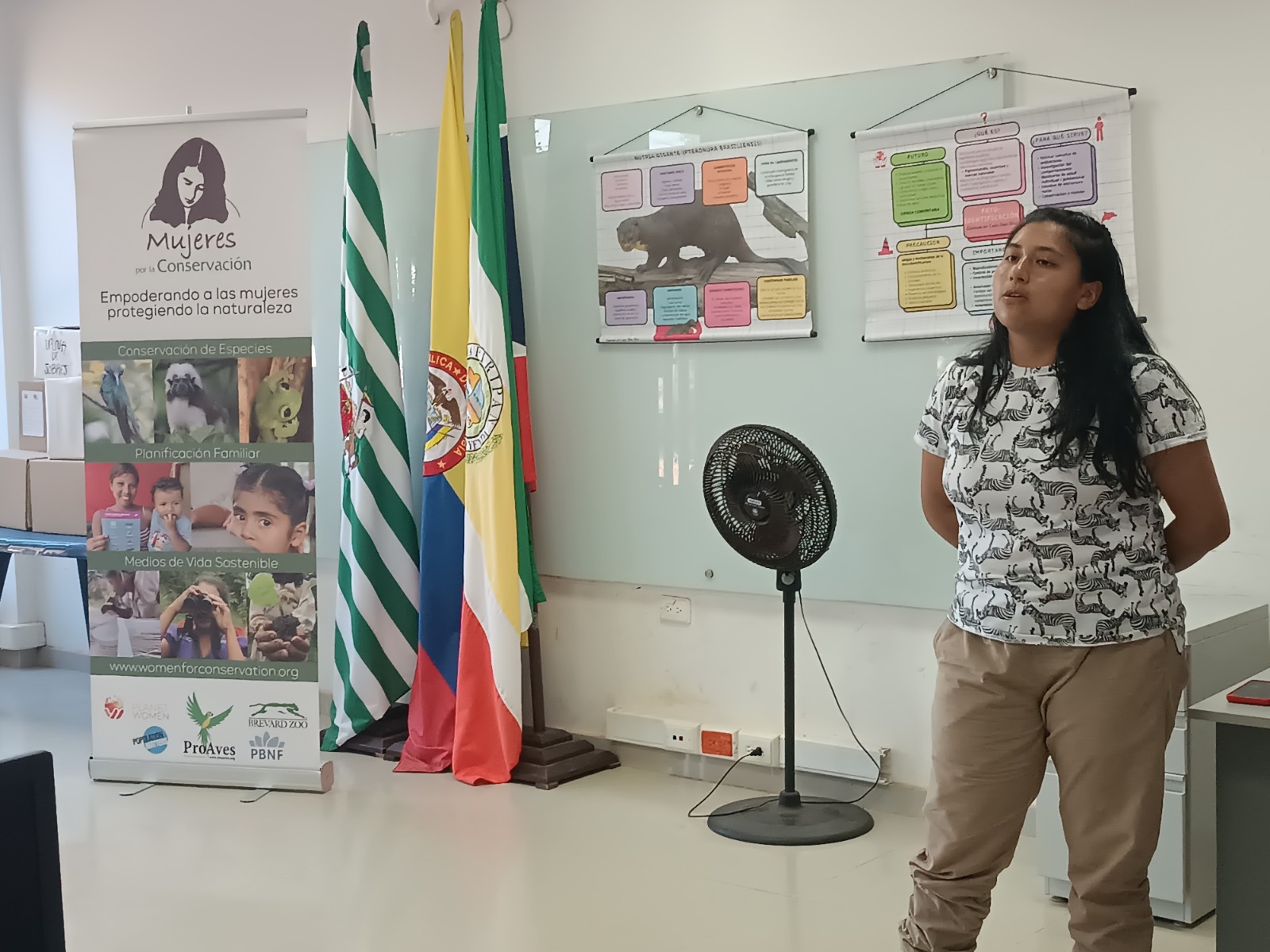
*Observed a decrease in the population trend of the Pink River Dolphin.
* Obtained a large number of cultures of microorganisms in the habitats of these dolphins, samples that are in the process of analysis.
* Warned a high microbiological variability whose studies and laboratory results will not only provide knowledge about the Pink Dolphin and the Giant Otter, the state of their habitats and environments, but also could be relevant to the area of public health because They are areas with a high presence of human communities that require support in the implementation of projects related to population medicine and epidemiology.
Like her fellow researchers, Luisa Díaz contemplated an ingredient of capital importance in her project. The communication of results to the communities that interact with the dolphin and the otter through clear and understandable language, which in the end leaves no doubt about the urgency of preserving this species and the biological richness of its territories.
And it was there, in the field work, where and when Luisa most felt reaffirming her weight as a woman agent of change in environmental issues, actions that, according to the researcher, are supported by scientific methods, but also values such as love, patience, tolerance, empathy, perseverance and resilience when transmitting this knowledge to the actors involved in decision-making, such as the women of the territory, who will determine the future of this species.
“The role of women gives a special touch and certain power in the world of conservation. We cannot waste the opportunity of the Foundation, it is difficult for us because we are generating new initiatives, new paths, but I feel that it is important to inspire female scientists who are growing. Let us determine this space as ours, appropriate it and sit there.”
Luisa Diaz. Veterinary Medicine student. Project: “Detection of antimicrobial-resistant pathogens considered priorities for public health in bodies of water near the ProAves El Jaguar Reserve”: preliminary study of the habitat and distribution of the Giant River Otter and the Pink River Dolphin.
Bibliographic references:
Nuestra U. (marzo 2024) En Colombia persisten las desigualdades de género. Periódico Nova et Vetera. https://urosario.edu.co/periodico-nova-et-vetera/facutad-de-ciencas-naturales/en-colombia-persisten-las-desigualdades-de-genero-en-la-investigacion-cientifica
Biblioteca Cepal. (Mayo 2024). Desde el gobierno digital hacia un gobierno inteligente. Biblioguías. https: https://biblioguias.cepal.org/gobierno-digital/concepto-gobernanza


